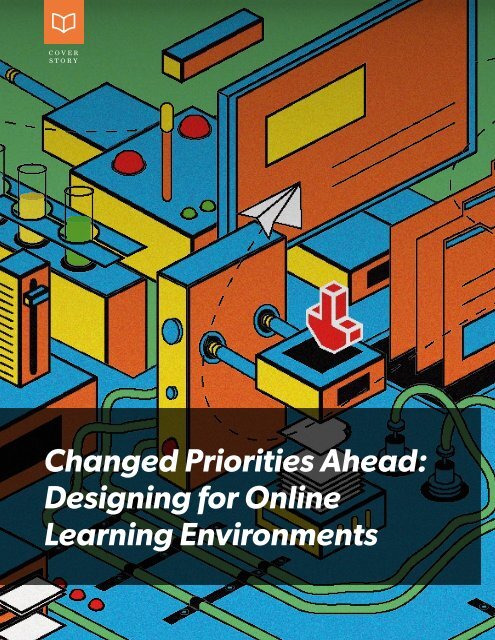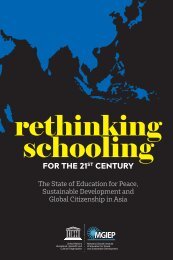The Blue DOT - 12: Reimagining Learning Spaces for Uncertain Times
Create successful ePaper yourself
Turn your PDF publications into a flip-book with our unique Google optimized e-Paper software.
COVER<br />
STORY<br />
COVER STORY<br />
KAVITA RAO<br />
PROFESSOR OF SPECIAL EDUCATION ,<br />
UNIVERSITY OF HAWAI‘I, MĀNOA<br />
Kavita's work focuses on instructional and assistive technology,<br />
Universal Design <strong>for</strong> <strong>Learning</strong> (UDL), culturally and linguistically<br />
diverse learners, and online learning. She has worked<br />
extensively with schools and teachers in Asia and the Pacific,<br />
supporting ef<strong>for</strong>ts to integrate technology and create inclusive<br />
learning environments. She is interested in exploring ways that<br />
digital tools can help to reduce learning barriers and support<br />
student achievement in the classroom. She has published<br />
numerous articles and book chapters on technology and UDL,<br />
most recently the book UDL <strong>for</strong> Language Learners.<br />
T<br />
he term “online learning” conjures up images of<br />
students working on their computers, engaging in<br />
learning activities and having dynamic interactions<br />
with peers and teachers using various digital means. In<br />
the ideal online learning environment, students work seamlessly in<br />
<br />
learning tasks they are engaging in. <strong>The</strong>y work independently on<br />
some activities, get guidance from their teacher at times, and have<br />
opportunities to collaborate with peers. <strong>The</strong>y complete activities<br />
and assignments using digital tools that support and enhance the<br />
learning process.<br />
Changed Priorities Ahead:<br />
Designing <strong>for</strong> Online<br />
<strong>Learning</strong> Environments<br />
Creating these types of online learning experience requires<br />
teachers, administrators, and parents to have knowledge and skills<br />
In March 2020,<br />
educators collectively experienced the challenges of a<br />
rapid shift to distance learning (DL) at an unprecedented<br />
and global scale. Around the world, educators moved instruction,<br />
at a K<strong>12</strong> and post-secondary level, into virtual learning modes with<br />
very little opportunity to prepare. While this emergency shift to DL<br />
was not ideal, it gave us a glimpse of what we can and should be<br />
prepared <strong>for</strong> in the future. For many, the experience showed us what<br />
worked and what did not work in our attempts to teach and learn<br />
<br />
during the rapid shift to teach online, and be more prepared <strong>for</strong><br />
future distance learning experiences.<br />
3 1


















